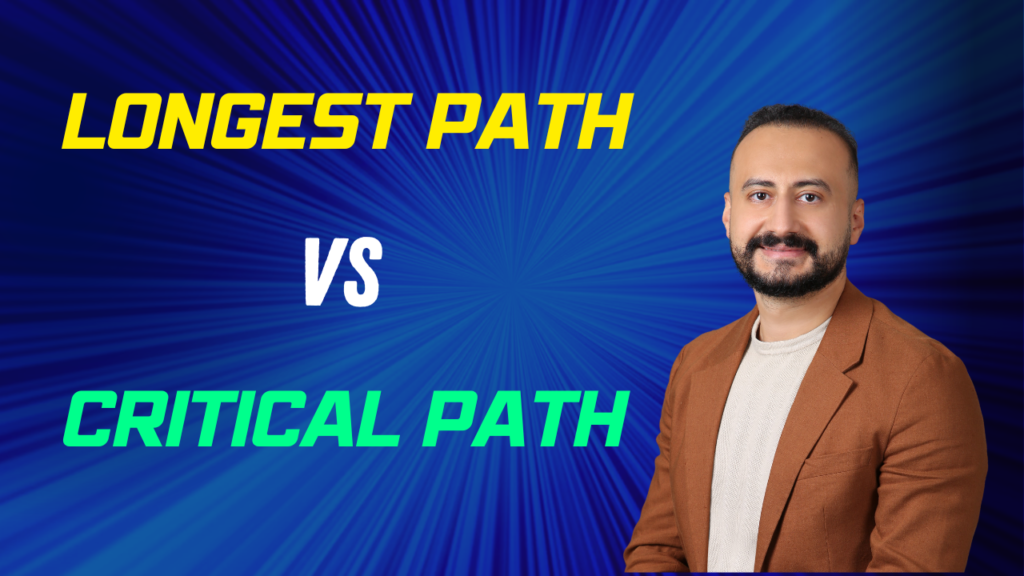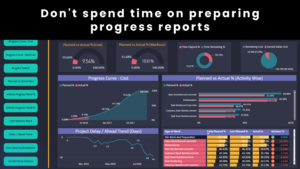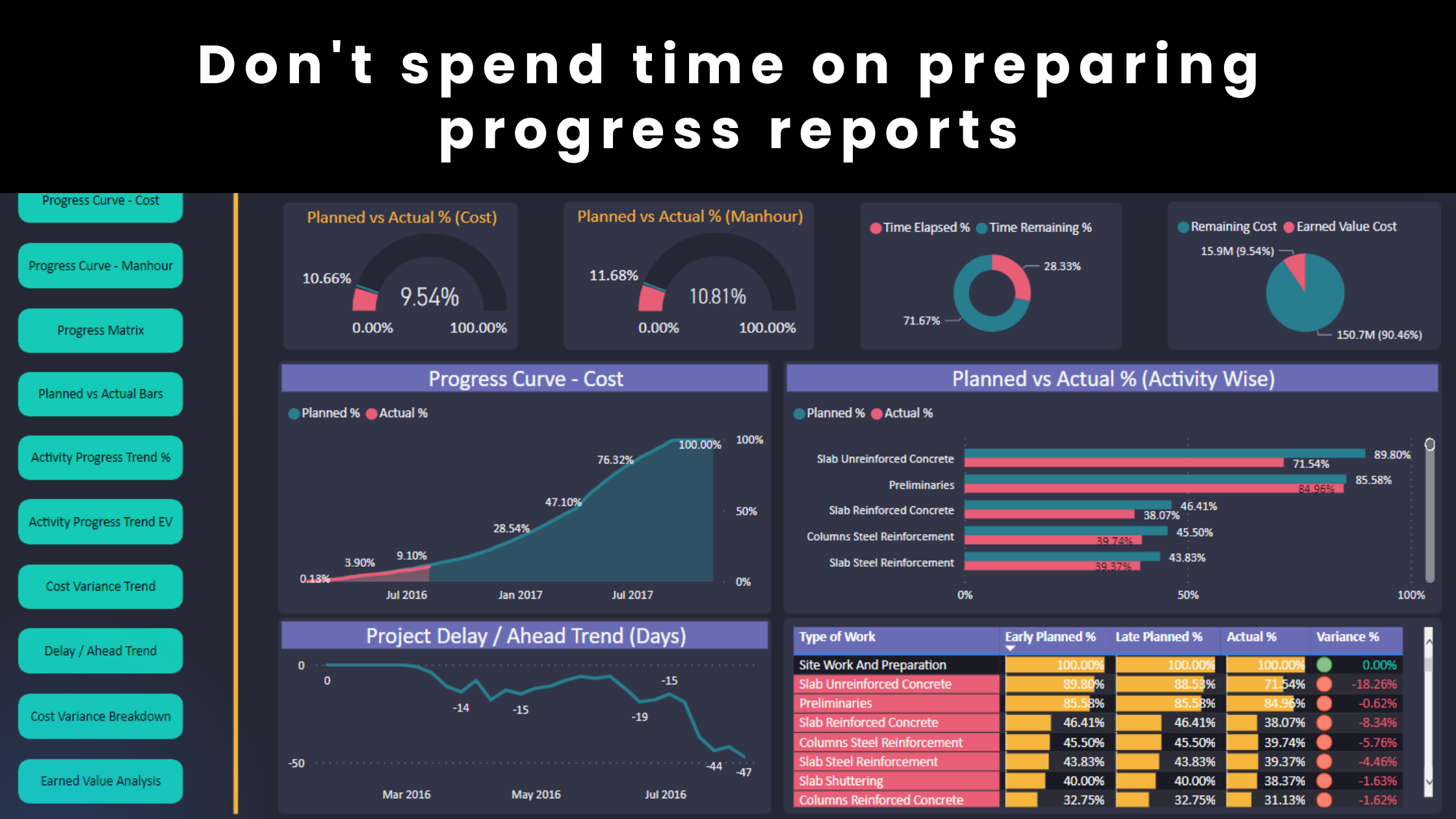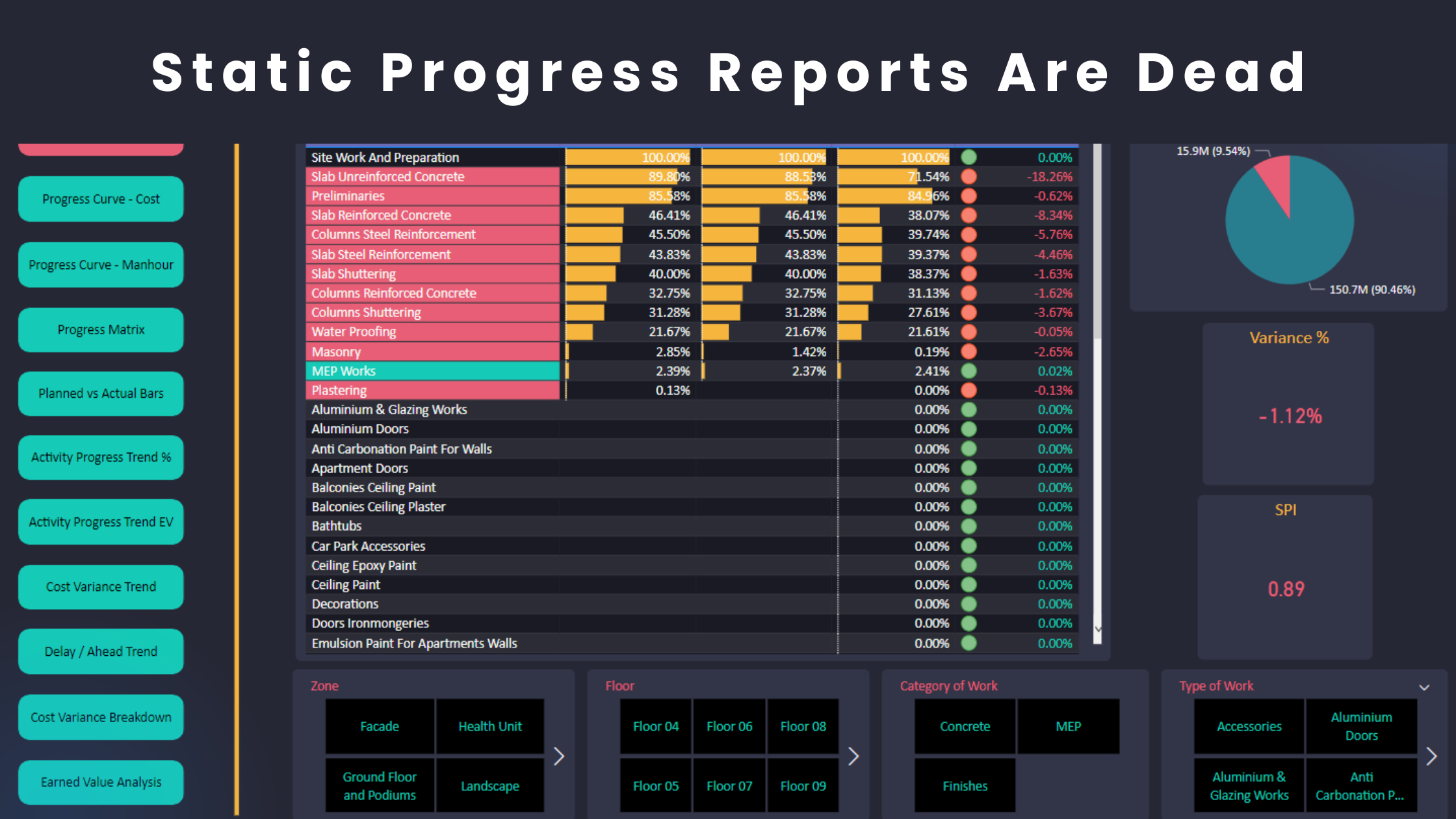Many planning engineers experience confusion regarding the difference between the longest path and the critical path. This article explains the definition, focus and use case for both. A spoiler alert: the longest and critical paths are not the same. In fact, the longest and critical paths are different to the extent that P6 offers separate filters, columns, grouping and presentation for both. The difference is more prominent in the schedule updates during the project execution as demonstrated in the below image. When a schedule update is completed, critical paths can be generated whereas the corresponding scope of each path is completed beyond the contract completion date. This dynamic is better analyzed through a multiple float paths framework. On the other hand, the “Longest Path” is the longest sequence of activities among other competing critical paths. This path is what drives the forecasted completion date and is driven by the dominant cause of the overall project delays. The below image is for demonstration purposes only as you might have more critical paths in your project.
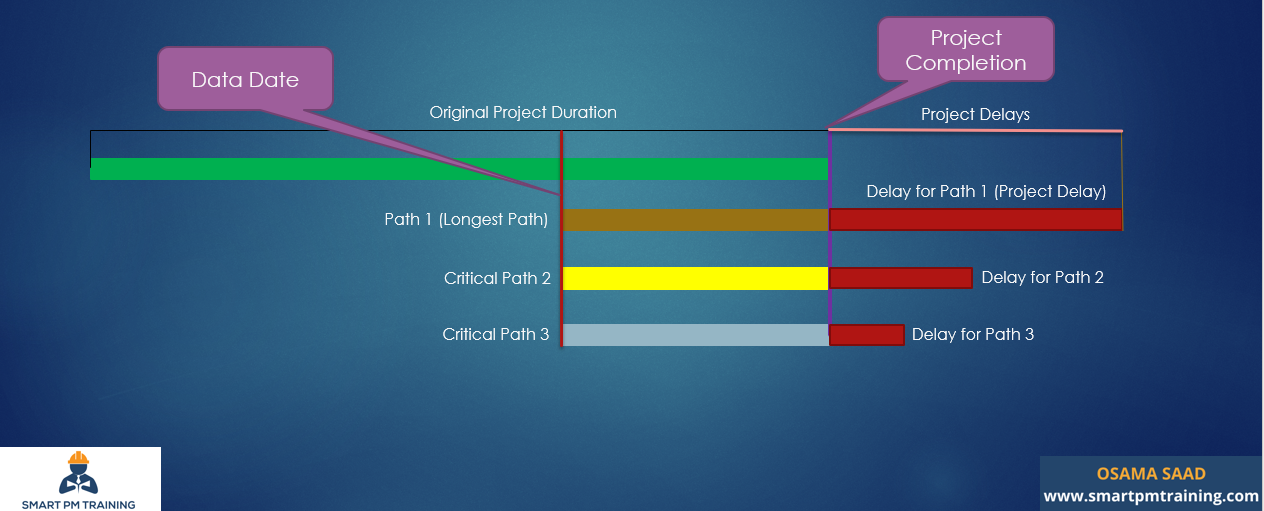
Longest Path
Definition: It is the longest sequence of activities that drives the forecasted schedule completion date.
Focus: It focuses on the “longest” chain of activities and the dominant driver of the forecasted completion date.
Use Case: The longest path analysis is more prominent in the schedule updates. This analysis can examine how the forecasted completion date is derived because it can effectively determine the longest sequence of activities among other competing critical paths.
Critical Path
Definition: It consists of activities that have a total float amount of less than or equal to zero. Although the total float amount that determines the criticality threshold can be customized inside Primavera P6 under the scheduling options (refer to the below snapshot), zero is the industry standard.
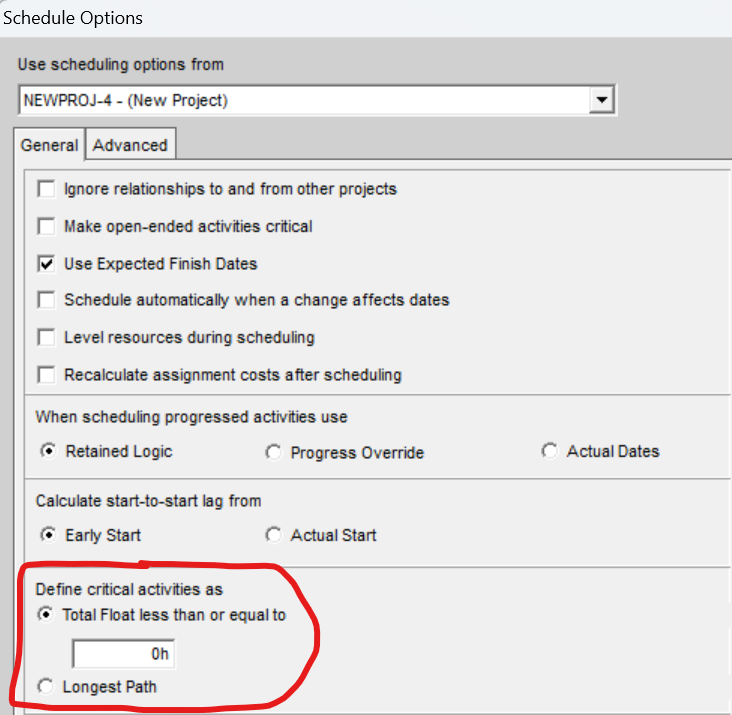
Focus: It focuses on the most critical tasks that directly impact the contract’s completion date.
Use Case: The critical path analysis is used in both the baseline schedule and the schedule updates. However, in the schedule updates, the critical path analysis will produce distinct results over using the longest path analysis alone. Analyzing the multiple float paths is an effective method for performing critical path analysis during project execution.
Identifying the Longest and Critical Paths
There are some ways to identify and recognize both the longest path activities and the critical path activities in P6. However, I will only cover the most common features that I personally use.
1- Filter
You can filter the longest path and critical activities as highlighted in the below image.
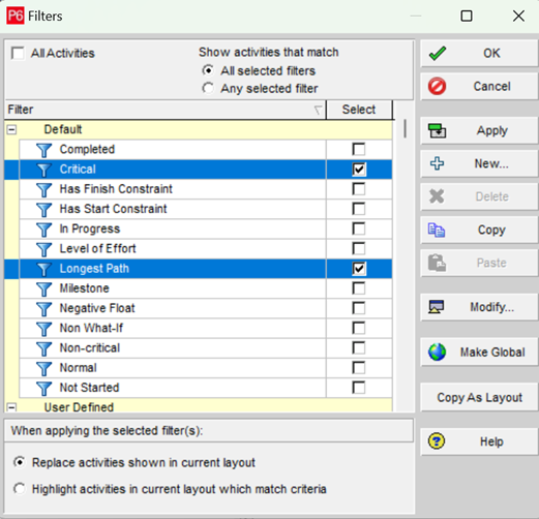
2- Activity Columns
You can add “Critical” and “Longest Path” columns to your activities layout as below.
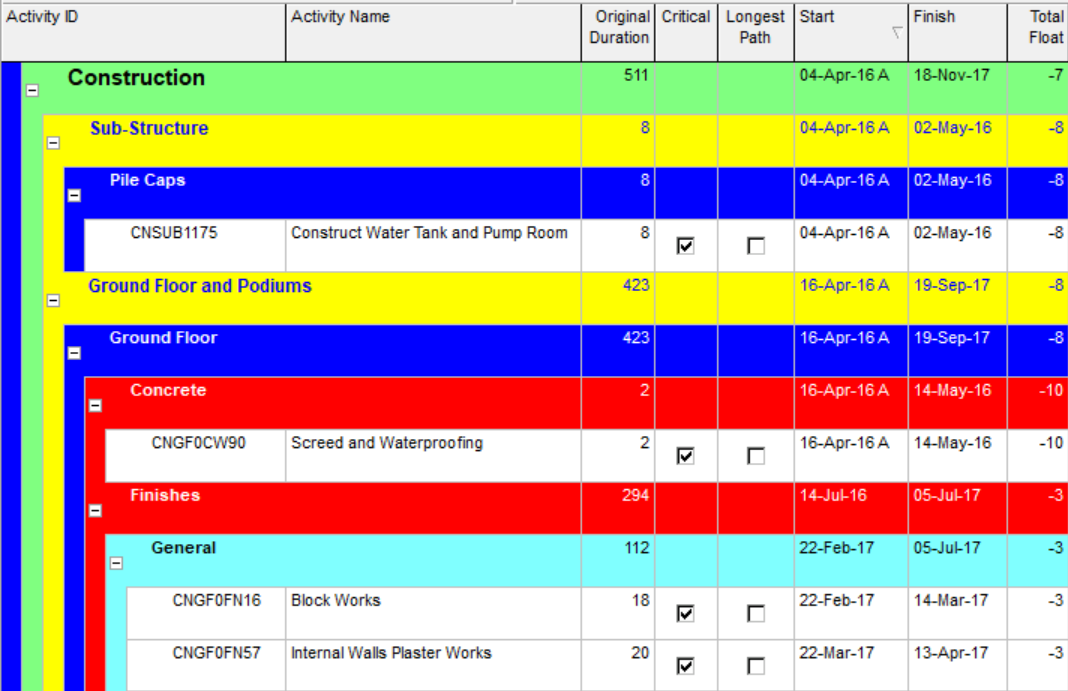
3- Grouping
You can group your activities by whether the activities are “Critical” or “Longest Path” as per the image below.

Finally, I would like to add two final points you need to consider while analyzing the critical path and longest path activities.
- In the baseline, the critical and longest paths are the same.
- In the schedule update, a critical path is not necessarily the longest.
- The longest path is always a critical path except when the forecasted completion date is earlier than the contract completion date. In this case, the longest path will show a positive float and therefore, it is not critical. However, this is rarely the case. In my experience, Contractors do not often submit a schedule update that shows a completion date that is earlier than the contract completion date.
Conclusion
To sum up, the critical path and longest path analyses can shadow each other but are not the same. Performing any of both analyses will depend on your objective and which schedule version you are using.
Regards,
Osama Saad, MBA, PMP, PSP, CCP, PMI-SP
Learn More!
